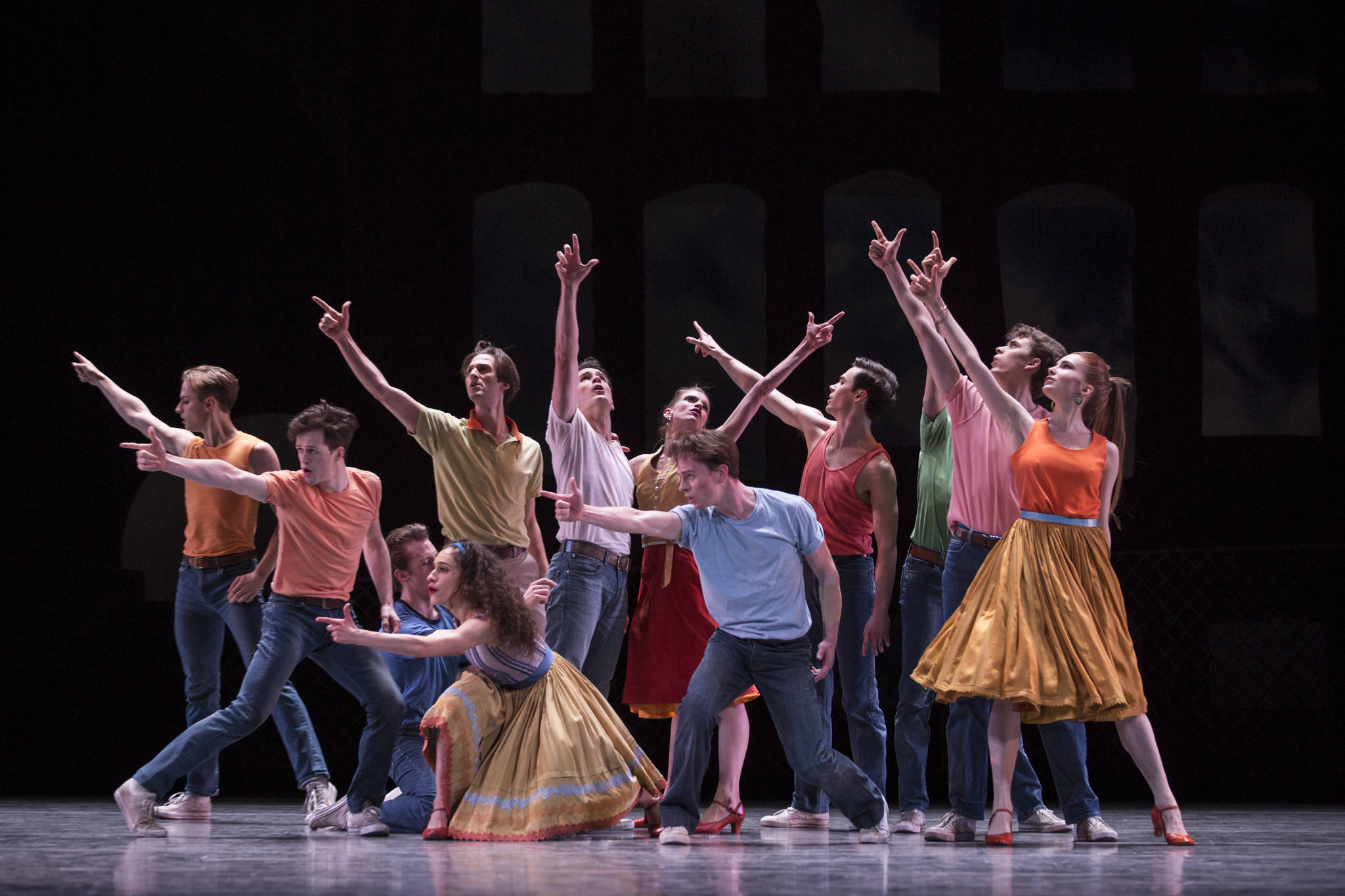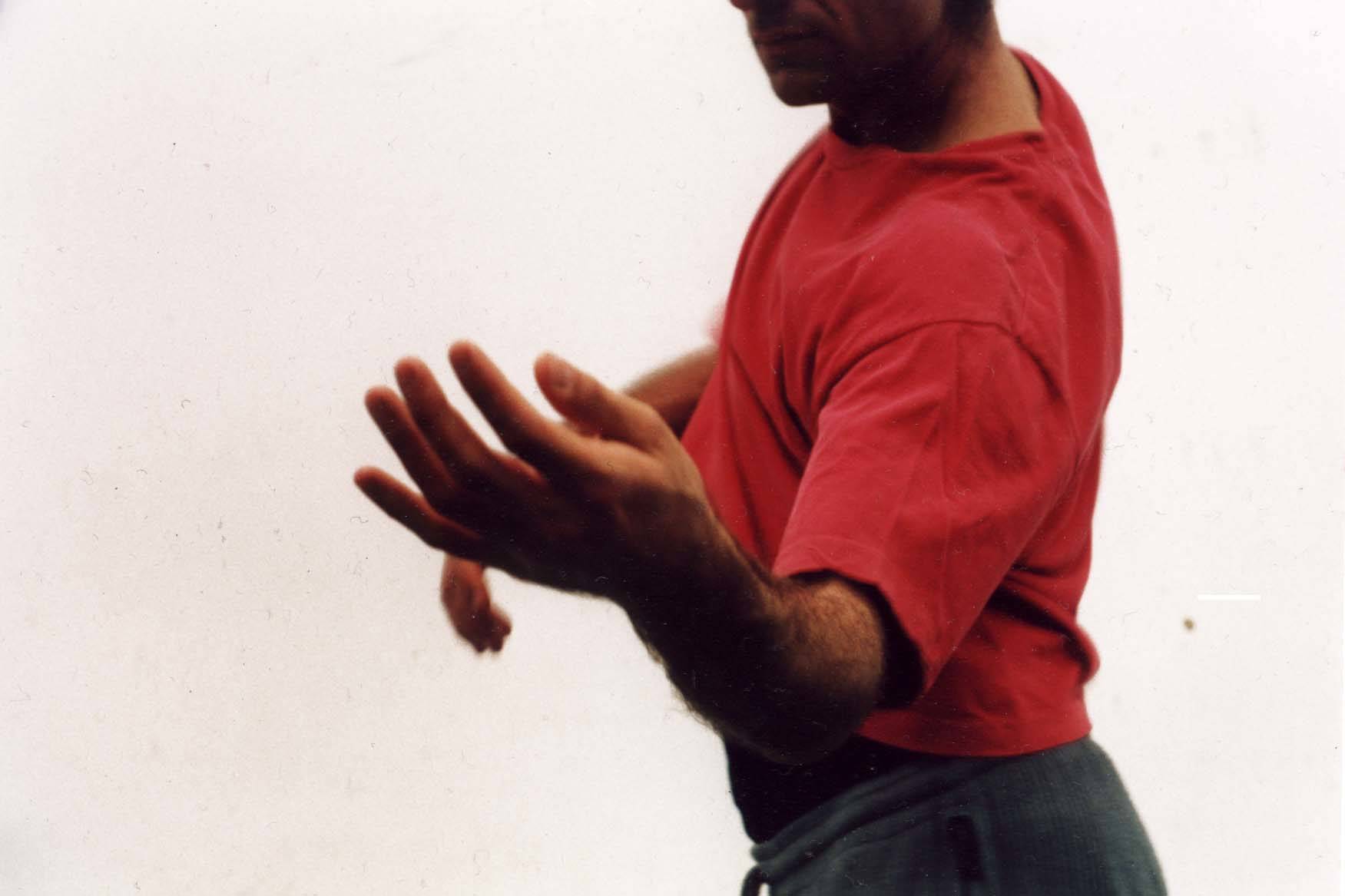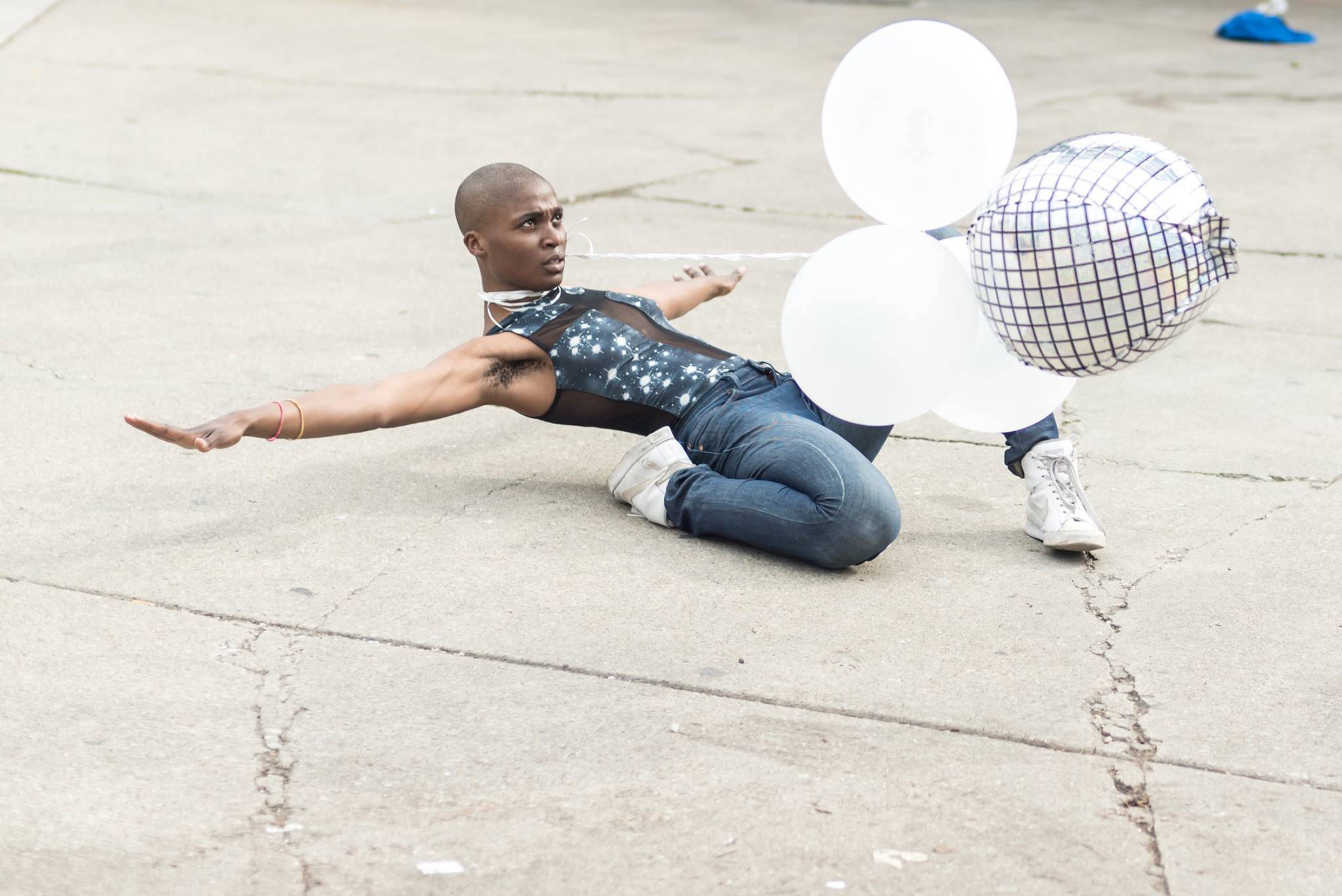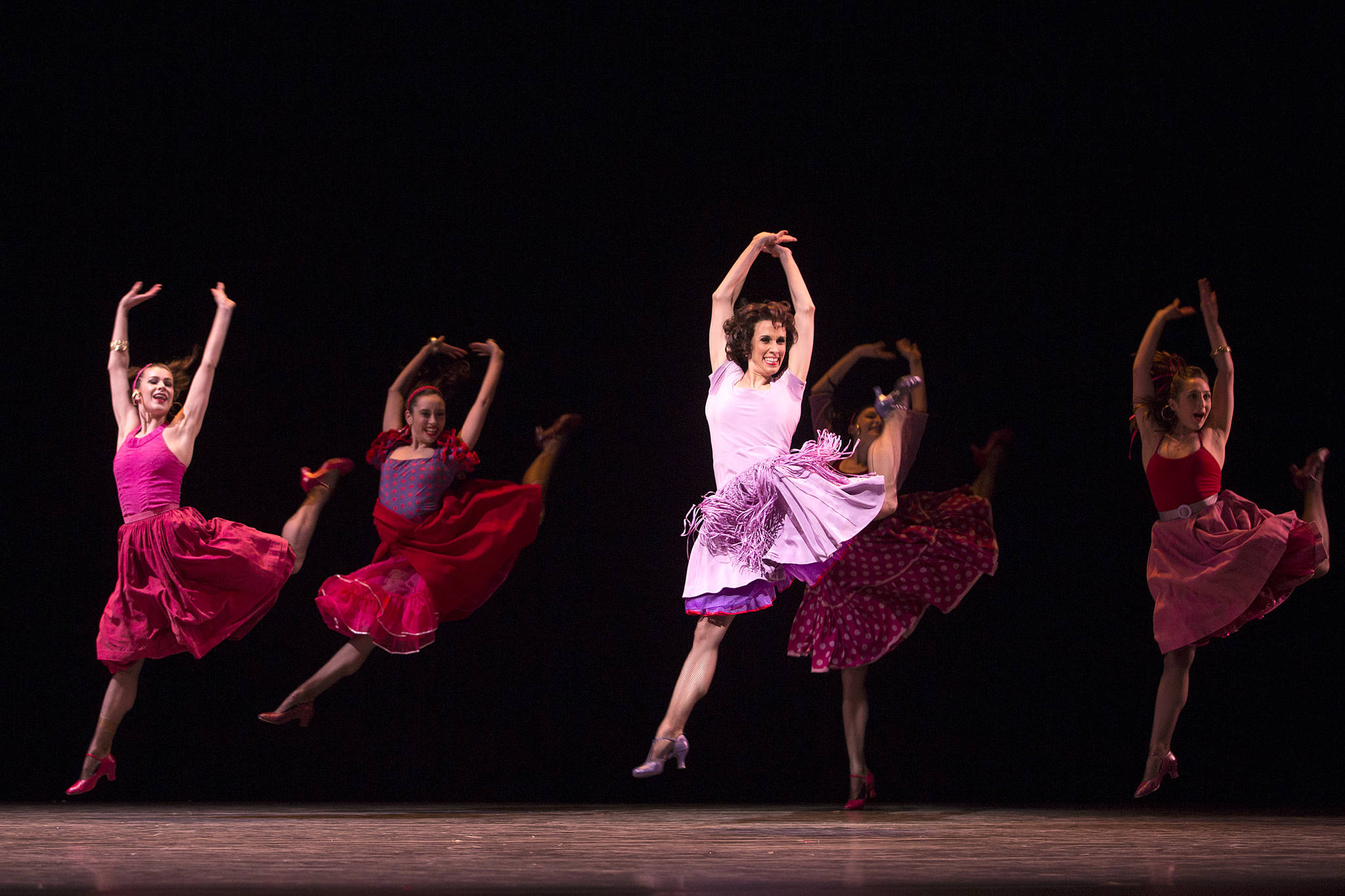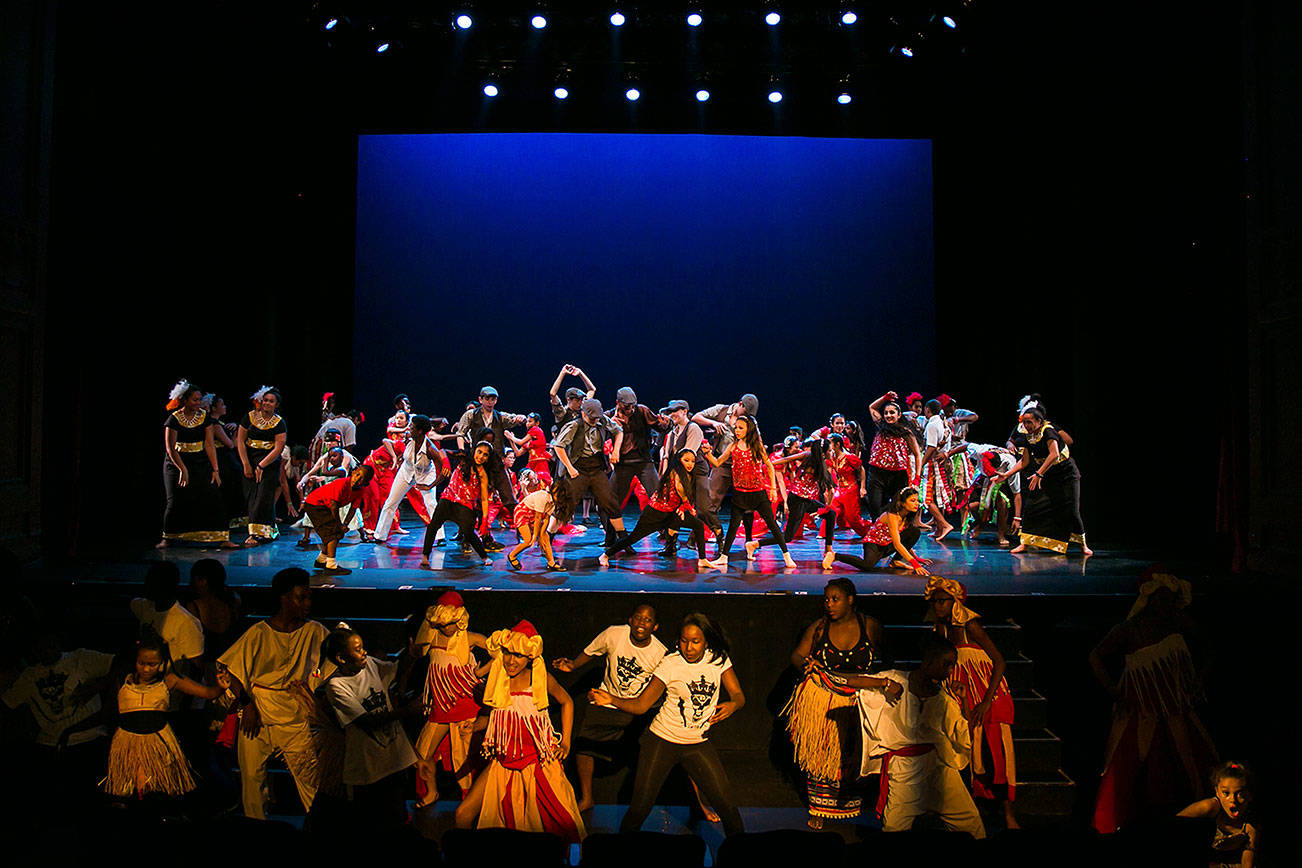Some dances are made from scratch, directly for a ballet company, while others take a more circuitous route. Pacific Northwest Ballet’s current program, Ballet on Broadway, is a trio of works that started their lives in musical theater, then were revised for a concert stage. But though they share this back story, they deal with narrative and character differently.
Christopher Wheeldon’s Carousel (A Dance) distills the story of abusive carnival barker Billy Bigelow and young millworker Julie Jordan to a duet surrounded by a playful ensemble. He’s manipulative and brusque; she’s unsure but intrigued. Wheeldon is known for his duets, especially the intricate gymnastics of partnering, and he uses those skills here to underline the couple’s basic hesitant relationship as it develops. While Jerome Tisserand wasn’t quite aggressive enough dancing with Elizabeth Murphy last Saturday afternoon, Seth Orza had just the right amount of swagger that evening, performing with his wife, Sarah Ricard Orza. The ensemble creates the specifics of the carnival setting, including an ingenious version of a human carousel, while the main couple struggles with their feelings.
When he first came to the United States, George Balanchine worked on Broadway and in Hollywood to pay the bills before he established what became the New York City Ballet. In 1936, the film On Your Toes was a typical Hollywood fantasy set in the theatrical world, full of Russian ballet dancers and American jazz babies. Balanchine excerpted a cartoony “show within a show” in 1968 for “Slaughter on Tenth Avenue,” the story of a young hoofer infatuated with a stripper, in a club filled with dizzy showgirls, bumbling cops, and sly bartenders. The ballet bounces along like an animated train from a Krazy Kat short subject. It really needs a dynamic pair in the main roles, and Saturday night Lindsi Dec as the Stripper and Steven Loch as the Hoofer brought incredible zest to their parts. Dec has always had a direct line to her inner cheerleader, and Loch’s tap skills let him make a character out of his virtuosity; the two of them led the rest of the cast in a high-energy romp.
Jerome Robbins’ West Side Story began life as a musical based on a play (Romeo and Juliet) that was then made into a film, so it was already revised several times before the choreographer made a suite of the dances for New York City Ballet in 1995. The film, with its ultra-active camera work, is more familiar to contemporary audiences than some of the contained staging for the theater, so it takes a few moments to adjust expectations. But the characters we know are all there, and since Robbins chose to have them actually sing much of the time, the language gives another layer of specificity to their work. Both Ben Griffiths and Jerome Tisserand had the sweetness that we expect from Tony, while Lindsi Dec and Noelani Pantastico each generated heat as Anita without playing her as a stereotype. Robbins altered the ending of the work for this version, leaving with the ensemble singing “Somewhere,” and setting it in an open field. It’s a more hopeful finish, but not quite as impactful.
One of the more charming parts of the program is the inclusion of the trailers for each of the films. In the promotion for On Your Toes, a temperamental Russian impresario declares that he will never produce a “jazz ballet.” “I will not give the American audience what they want. I’ll give them what they ought to like.” PNB artistic director Peter Boal is having none of that—he is most certainly giving the audience what they want. Ballet on Broadway, McCaw Hall, 321 Mercer St., 441-2424. pnb.org. $30–$187. 7:30 p.m. Thurs., April 20–Sat., April 22; 1 p.m. Sun., April 23.
dance@seattleweekly.com
